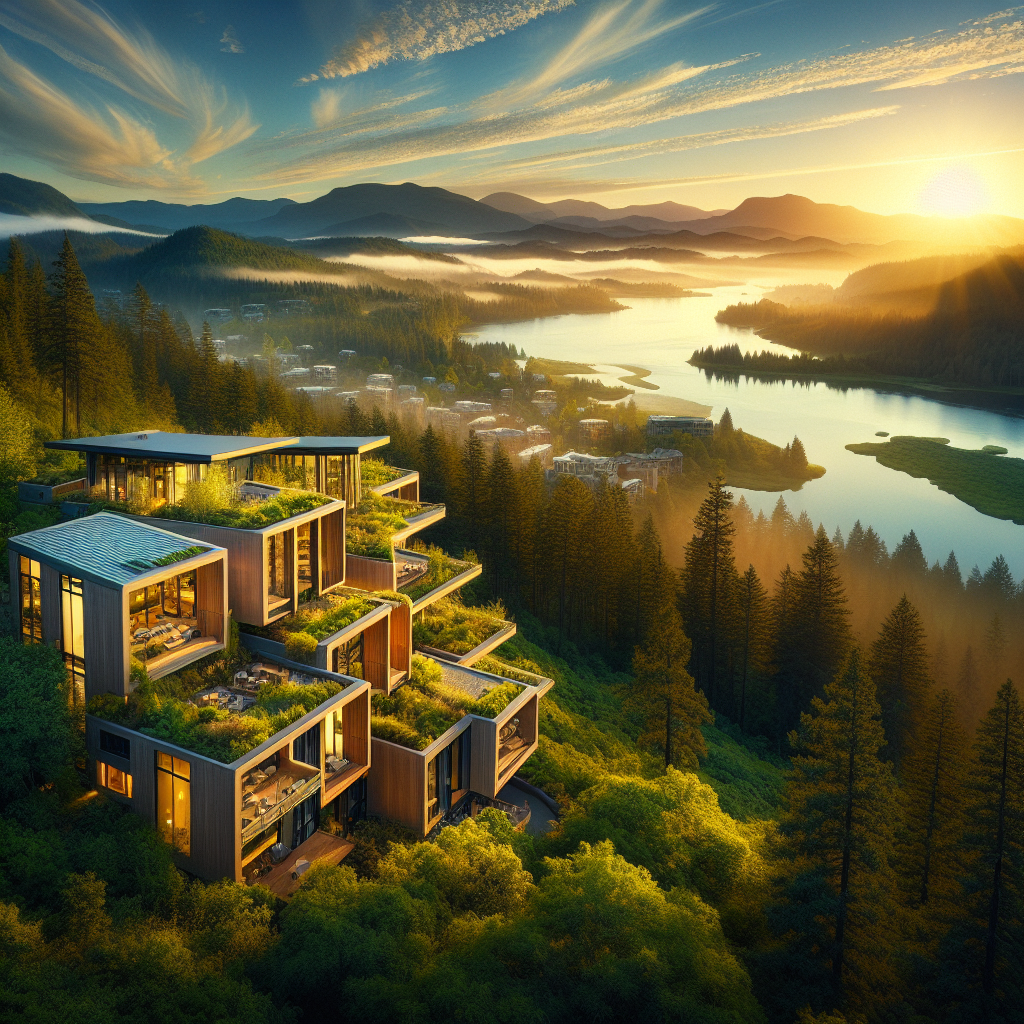Emerging Green Architectural Giants of the Pacific Northwest
Perched on the edge of the Pacific, Oregon is a state known for its majestic forests teeming with Douglas fir trees, sparkling rivers like the mighty Willamette, and endlessly captivating coastline. Oregonians, deeply attached to their region’s natural beauty, have a long history of environmental stewardship. This love for the environment inspired a drive to pioneer sustainable building practices.
The Birthplace of Northwest Regional Style
In the earliest days, Oregonians had a knack for looking at a Douglas fir and imagining the potential beyond its bark, transforming those giants into longhouses and traditional tipis. This visionary utilization of local resources in symbiosis with the landscape forms the essence of the Northwest Regional style – an architectural philosophy that has come to shape the green building initiative in Oregon.
Remember the iconic Watzek House designed by John Yeon in 1937? Yes, the one right there in Portland’s southwest hills. Any local worth their marionberries knows it ushered in a design revolution that was all about creating harmony with our environment. This is where Oregon began nurturing sustainable building practices, long before the rest of the world caught on.

When the Sunflower Inspired a Revolution
Oregon’s journey to leadership in sustainability took a significant leap in the late 70s when Solar Energy Research Institute (SERI) was established. SERI (known as National Renewable Energy Laboratory today), funded by the U.S Department of Energy, started a series of workshops called “From Dream to Reality.” These workshops held at Oregon facilities like the Hoke residence kindled a vision of green design and solar technologies. The Sunflower House, found in Eugene’s buzzing Whiteaker district, was one of the pioneering projects that blossomed from SERI’s initiative – a solar-heated home that became a cornerstone in the state’s sustainable building history.
Earth Advantage and LEED: Hand-in-Hand Success
The big game changer was brought by Earth Advantage, an Oregon local non-profit organization born out of Portland General Electric’s Earth Smart program. Their rigorous metrics and training for sustainable construction took our green aspirations from dreams to real-world application. It’s impossible to miss those shiny EA plaques dotting the homes along the Hawthorne Boulevard or the Riverplace Marina residences.
In conjunction, Leadership in Energy and Environmental Design (LEED) certification began gaining traction, propelling Oregon into the national limelight. Portland seized the moment to position itself as the ‘Greenest City in America,’ with the famed Pearl District serving as the crown jewel of green development.
Folks Out There Brewing Up Green Magic
Of course, local businesses have played a vital role in Oregon’s ascent in sustainable practices. Sure, we love our pinots and craft brews (raise a glass to Rogue Ales & Spirits!) but there’s also a mighty following for Brew Dr. Kombucha in Tualatin, a LEED Gold certified facility. And who doesn’t adore the wind-powered ‘green’ retail stores by Patagonia in Portland?
Oregon: A Living Lab for Sustainability
Today, Oregon has become a living laboratory for innovative, green building strategies. From the vineyards of Willamette Valley to the high-desert city of Bend, new developments are constantly pushing the envelope. Sage-green rooftops, like the one on the Multnomah County Library, capture our often-plentiful rainfall, repurposing the water within the buildings. It’s as Oregonian as craft beer and Tillamook cheese!
In Oregon’s journey towards sustainable practices, we’ve had our hiccups and misty rain showers. There have been discussions, debates, and occasional crow cawing in the background. But isn’t that just part of Oregon’s quirky charm?
The Evergreen State of Mind
This region breathes life into the meaning of sustainability. It’s like cherishing a Crater Lake sunset or savoring a bowl of Dungeness crab bisque – you yearn to preserve the experience and pass it on to future generations. Oregon has not just adopted sustainable building practices, it has nurtured them, shaped them, and carried the torch with pride. Like a clear sunrise on Mount Hood, the future of Oregon’s sustainable building practice looks bright and promising. As fellow Oregonians, let’s delight in our natural wealth, foster mindfulness, and continue this green legacy for generations to come. Now that’s as Oregon as it gets.
